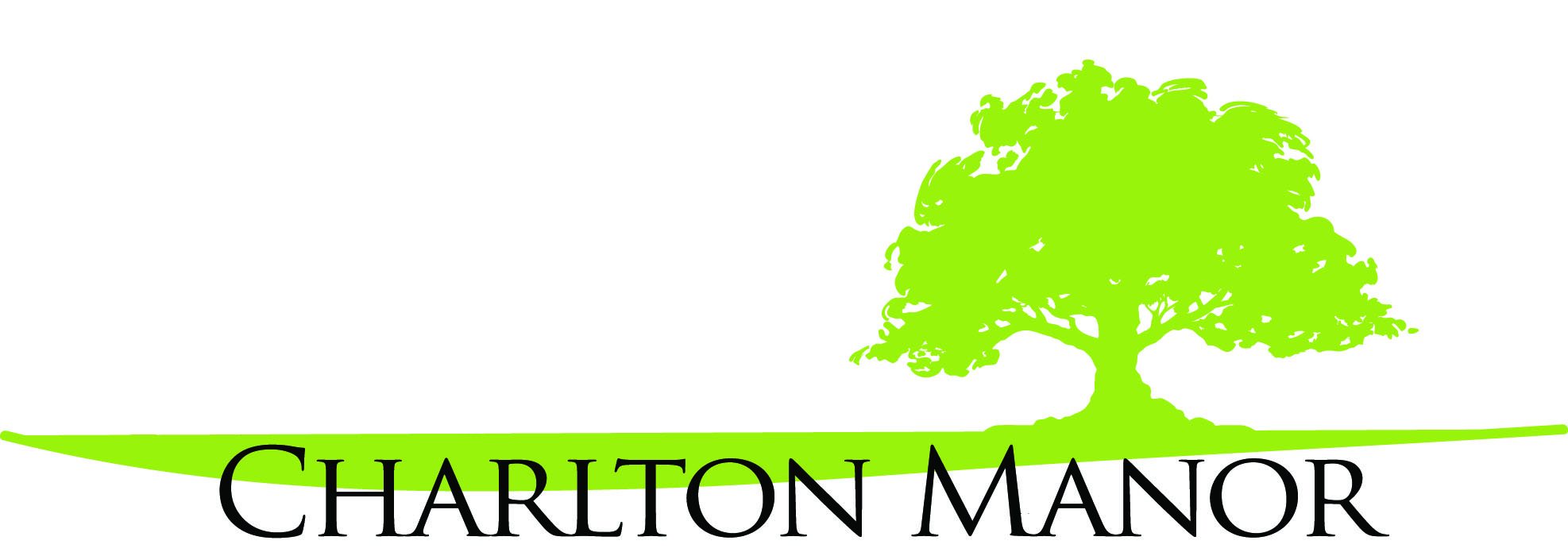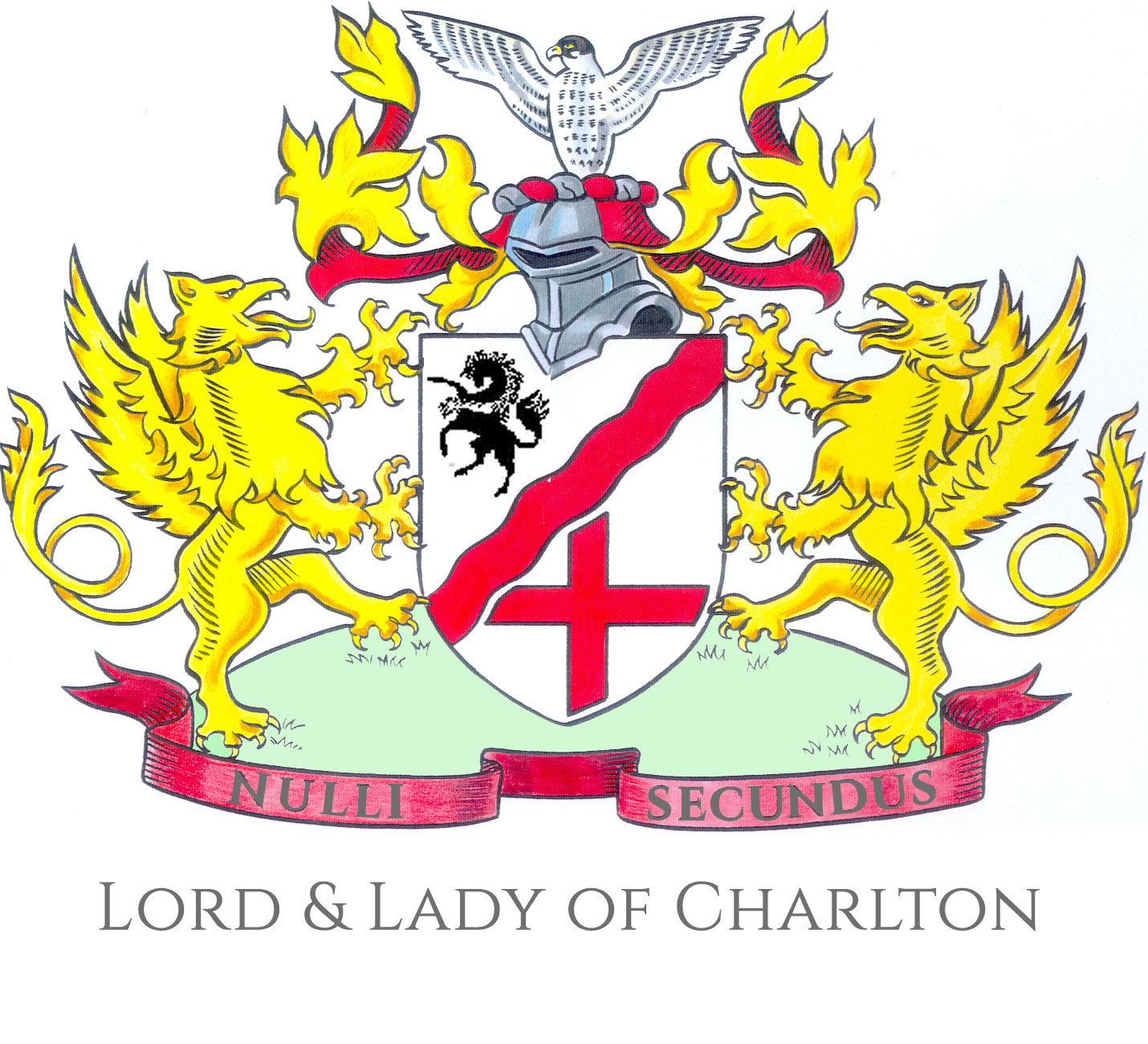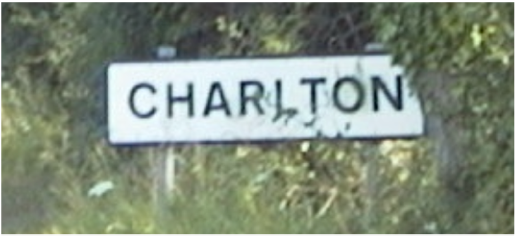 Charlton is an English Manor and ancient demesne over 1,000 years old in the county of Hertfordshire
in England, approximately 45 minutes north of London, and adjacent to the market town of Hitchin with
which it has ancient historical connections. Charlton Manor is recorded in the Hertfordshire County Archives.
Charlton is an English Manor and ancient demesne over 1,000 years old in the county of Hertfordshire
in England, approximately 45 minutes north of London, and adjacent to the market town of Hitchin with
which it has ancient historical connections. Charlton Manor is recorded in the Hertfordshire County Archives.
Over time the ownership of Charlton Manor, a landed estate, and the title of Lord of the Manor of Charlton, has changed numerous times since coming into being before 1066 and the Norman Conquest. It passed through the hands of Earl Harold Godwinson (who became King Harold II on 6th January 1066 after the death of Edward the Confessor), King William I (Duke of Normandy), and various Priors and heads of the Knights Templar before they were disbanded. This was followed by ownership by the Knights of the Hospital of St. John of Jerusalem (Knights Hospitallers) before they were in turn disbanded causing ownership to pass to King Henry VIII as part of the Dissolution of the Monasteries. From then Charlton Manor and the Lordship of Charlton descended with Hitchin Priory under the initial ownership of Ralph Radcliffe.
Over the following four centuries the Lordship of the Manor of Charlton passed as part of Hitchin Priory through various members of the Radcliffe and Delmé-Radcliffe family. In 1925 Sir Ralph Delmé-Radcliffe was noted as Lord of the Manor in the Manorial Documents Register of the Royal Commission on Historical Manuscripts in London. When he died in 1963 the Lordship passed to his daughter Anne who subsequently sold Hitchin Priory. The Lordship was then passed by Anne to Peter Havart-Simkin, a British citizen currently residing in California in the United States, who now holds this ancient title.
Charlton Manor, William the Conqueror and the Domesday Book
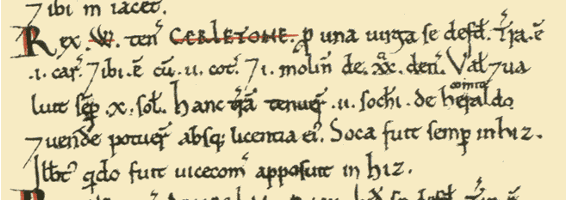 The Manor of
Charlton dates to well before William the Conqueror and the conquest of England in 1066 and
is referenced in the Domesday Book ("Doomsday Book") of 1086 as Cerletone (see illustration) later to
become known as Charlton. There is also a reference and translation in Open Domesday. As an English manor,
Charlton was also reputed to be known as Moremead although specific references and connections to Charlton
are sparse although a main road through the area is still called Moormead Hill.
The Manor of
Charlton dates to well before William the Conqueror and the conquest of England in 1066 and
is referenced in the Domesday Book ("Doomsday Book") of 1086 as Cerletone (see illustration) later to
become known as Charlton. There is also a reference and translation in Open Domesday. As an English manor,
Charlton was also reputed to be known as Moremead although specific references and connections to Charlton
are sparse although a main road through the area is still called Moormead Hill.
Prior to William the Conqueror, Charlton Manor was owned by Earl Harold (and in 1066 by him as Harold II the last Anglo-Saxon king) as the Overlord of the manor with the Lordship held by two of Harold’s sokemen. Earl Harold controlled some 16 Hertfordshire manors in the Hundred of Hitchin (which consisted of 20 different towns, villages and hamlets at the time including Charlton). The Manor of Hitchin was the head of the group held by Earl Harold, to which King William succeeded after the Conquest. Prior to 1066 Earl Harold, the son of the Earl of Wessex and brother-in-law of King Edward the Confessor, was a landowner associated with 719 properties in England. After the conquest, King William owned all the lands previously owned by Harold and was associated with 2,360 properties in England according to the Domesday Book.
As part of his control exercised over land ownership in England, William granted the Manor of Hitchin to Ilbert, Sheriff of Hertfordshire, on behalf of the crown as a royal manor. Subsequently, the manors of King's Walden, Charlton and Offley were formally attached to the Manor of Hitchin by Ilbert. In 1086, at the time of the Domesday Book, King William was both the Tenant-in-Chief of the Manor of Charlton and the Lord of the Manor of Charlton. Following the attachment of Charlton, Peter de Valoines, Sheriff Ilbert’s successor, joined the manors of Dinsley, Wellbury and Welei to the Manor of Hitchin. Hence the Lord of the Manor of Charlton was also connected to the Manor of Hitchin. At the time, according to historical records, the total value of the Manor of Hitchin and its appurtenances was £106, whilst the sokes belonging to the manor were worth £40.
Charlton Manor from the Knights Templar to Henry VIII
Hertfordshire is known as a focal point for the Knights Templar in England. Baldock was a Templar created settlement between 1199 and 1254 – it was their English headquarters - and Royston has recently been shown to have a maze of tunnels (Royston Cave) created by the Templars allegedly to hold meetings and for storage (and some believe for storage of the lost treasures of the Knights Templar including the Holy Grail). There are also Templar tunnels beneath Hertford Castle.
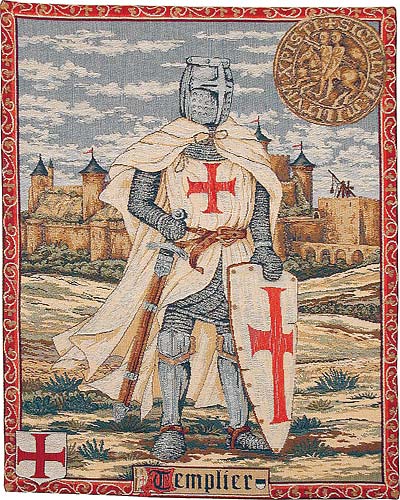 The Manor of Dinsley, which was formerly part of the Manor of Hitchin under Peter de Valoines, was given to
the Master and Brothers of the Knights Templar in the twelfth century after a chapter of the Order of the Temple meeting in Paris in
1147 (the land was valued at £15). It was confirmed by King Stephen who added two mills with the land.
The Templars built a preceptory on the site – which was renamed or known as Temple Dinsley. This was a cross
between a monastery and a manor. The village of Preston grew up around it.
The Manor of Dinsley, which was formerly part of the Manor of Hitchin under Peter de Valoines, was given to
the Master and Brothers of the Knights Templar in the twelfth century after a chapter of the Order of the Temple meeting in Paris in
1147 (the land was valued at £15). It was confirmed by King Stephen who added two mills with the land.
The Templars built a preceptory on the site – which was renamed or known as Temple Dinsley. This was a cross
between a monastery and a manor. The village of Preston grew up around it.
The property of the Knights Templar in the area was increased by gifts from benefactors and among the larger gifts was 13 acres of land in King's Walden, and further land in Charlton which was donated in 1244-5 by Maud de Lovetot, formerly the wife of Gerard de Furnival. As such, the Manor of Charlton became even more closely associated with and controlled by the Knights Templar in Hertfordshire, and the Lordship of the Manor of Charlton was hence vested in the Knights Templar. The Knights Templar were granted free warren in their demesne lands of Dinsley, Preston, Charlton, Walden and Hitchin in January 1253 by Henry III.
Charlton Manor and the Lordship of Charlton Manor were in the hands of the Knights Templar until the suppression of the order in 1307. Between 13 October 1307 and 8 January 1308, the Templars went unmolested in England. Despite this, after repeated pressure from Philip IV and Pope Clement V on Edward II, a few half-hearted arrests were made. During a show trial, which ran from 22 October 1309 until 18 March 1310, most of the Templars were forced to agree that the Master of the Knights Templar could not give absolution because that was regarded as heretical. Many of the Templars ended up entering more conventional monastic Orders. The majority of the Templars in England were never arrested but the damage was done. The order was officially disbanded in 1312 by Pope Clement V.
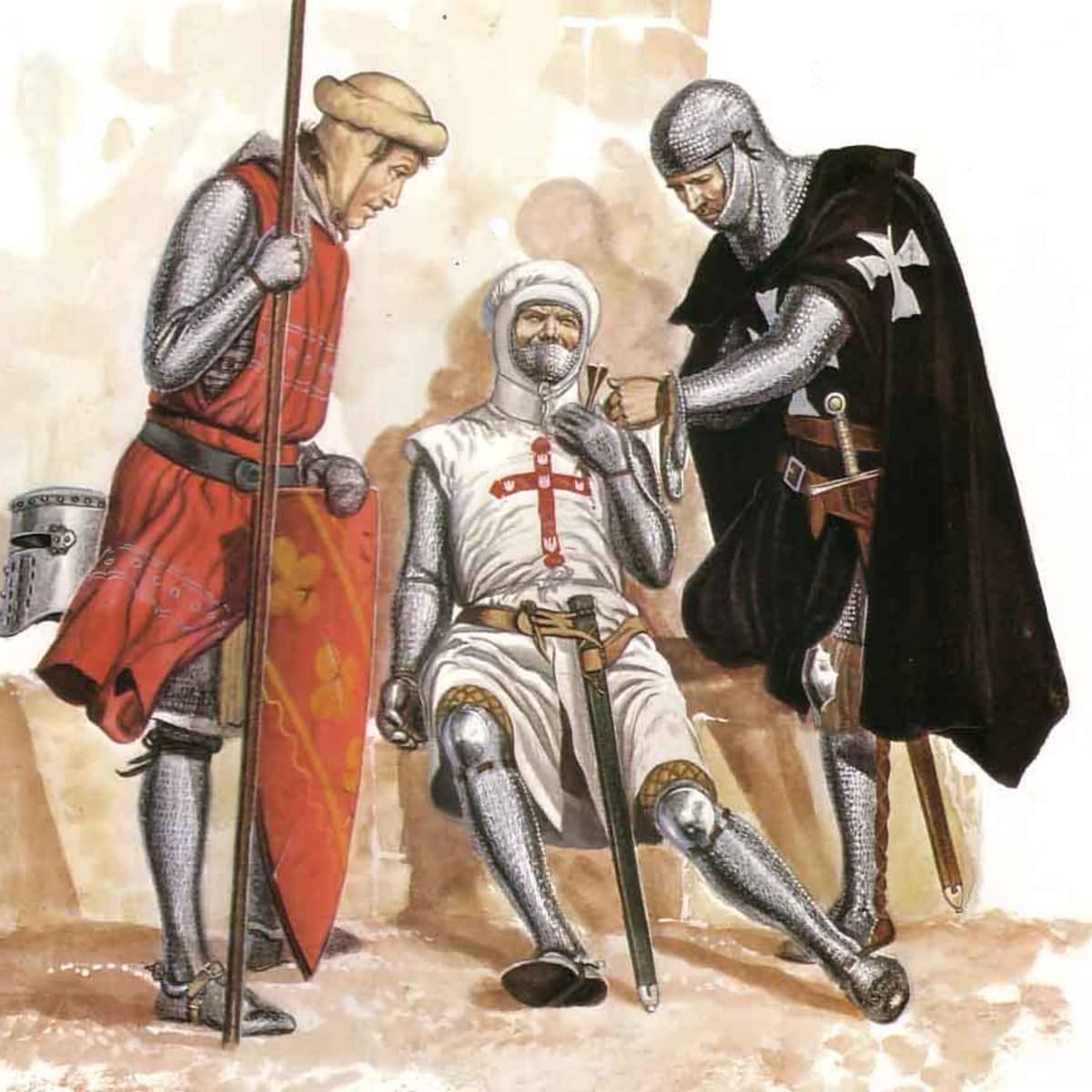 The Knights Hospitallers of St. John had meanwhile taken over where the Knights Templar had left off – they
were, to some degree, a continuation of the Templar ideals and practices. They became the owners of the
manors of Dinsley, Preston, Charlton, Walden and Hitchin by virtue of the Statute of 1324, and eventually
placed members of their order there. At an inquisition reported in in 1347, the jurors said that the Knights
Hospitallers held the Manor of Temple Dinsley as the heirs of the former Lords of Hitchin. As a result, the
Lordship of the Manor of Charlton was in the hands of the Knights Hospitallers of St. John until almost all
the property of the Knights Hospitallers was confiscated by King Henry VIII during the Dissolution of the
Monasteries in the Reformation. Though not formally suppressed, this caused the activities of the English
arm of the order to come to an end in 1542.
The Knights Hospitallers of St. John had meanwhile taken over where the Knights Templar had left off – they
were, to some degree, a continuation of the Templar ideals and practices. They became the owners of the
manors of Dinsley, Preston, Charlton, Walden and Hitchin by virtue of the Statute of 1324, and eventually
placed members of their order there. At an inquisition reported in in 1347, the jurors said that the Knights
Hospitallers held the Manor of Temple Dinsley as the heirs of the former Lords of Hitchin. As a result, the
Lordship of the Manor of Charlton was in the hands of the Knights Hospitallers of St. John until almost all
the property of the Knights Hospitallers was confiscated by King Henry VIII during the Dissolution of the
Monasteries in the Reformation. Though not formally suppressed, this caused the activities of the English
arm of the order to come to an end in 1542.
The dissolution of the monasteries was executed between 1536 and 1541. During this period, Henry VIII disbanded monasteries, priories, convents, and friaries expropriating their income, and disposing of their assets. As such, for a number of years, the Manor of Charlton along with the Lordship of the Manor of Charlton rested with King Henry VIII.
The connection of the Manor of Charlton with the Knights Templar and Knights Hospitallers is perpetuated by the names Temple Hedges and Spitalfields. In addition, one of the local streets remaining in Charlton is called Temple Close. It did not all end there though. In 1831 a British order was recreated by a group claiming to act on behalf of the Sovereign Military Order of Malta (the Knights of Malta). In due course, this order became known as the Most Venerable Order of Saint John (Knights of St. John), receiving a royal charter from Queen Victoria in 1888, before expanding throughout the United Kingdom and overseas. Today, the best-known activities of this order are the St John Ambulance Brigade in Britain which was founded in 1877.
Charlton Manor After Henry VIII
The next part of the history of Charlton Manor begins two centuries earlier when in 1317 Edward II granted to the Carmelite Friars a principal dwelling in the Manor of Hitchin where they could build a church and house for their habitation. The friary that they built there consisted of a gatehouse, domestic offices, cloister with kitchen and dormitory over, and a church dedicated to the Blessed Virgin Mary. Later, in 1351, other dwellings and lands were given to them by John de Cobham, 2nd Baron Cobham.
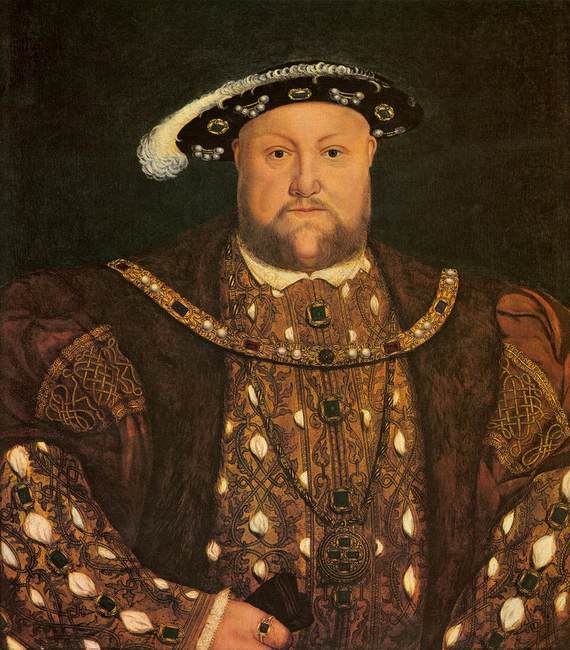 This became Hitchin Priory which was subsequently seized and partly destroyed during the Dissolution of the Monasteries.
The prior was required to take the Oath of Supremacy in 1534. As a result, the prior surrendered Hitchin Priory to
the crown on the 17th October 1538. The King’s Commissioners who took possession were Sir William Coffyn of Devon, a
gentleman of the Privy Chamber, and Henry Crowche but the monks remained at Hitchin Priory until the complete dissolution
of the priory in 1539, with Thomas Parrys acting as bailiff for the Crown.
This became Hitchin Priory which was subsequently seized and partly destroyed during the Dissolution of the Monasteries.
The prior was required to take the Oath of Supremacy in 1534. As a result, the prior surrendered Hitchin Priory to
the crown on the 17th October 1538. The King’s Commissioners who took possession were Sir William Coffyn of Devon, a
gentleman of the Privy Chamber, and Henry Crowche but the monks remained at Hitchin Priory until the complete dissolution
of the priory in 1539, with Thomas Parrys acting as bailiff for the Crown.
During the time of the Dissolution, the Lordship of Charlton and the Manor of Charlton, along with all the lands formally owned by the Knights Templar and subsequently the Knights Hospitallers, and the Manor of Hitchin and its sub-manors including Hitchin Priory, all passed into the ownership of Henry VIII. None of them remained in the possession of Henry for very long as eventually they all passed into or were sold into private hands. At this time, except for the main house, which was in a good state of repair, the remainder of the buildings at Hitchin Priory were in a poor condition. A survey, now held at The National Archives in Kew, declared that “all the buildings were sore decayed and very ruinous both in timber and tile for lack of reparations”.
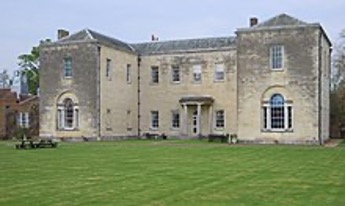 The site, and what remained of Hitchin Priory, was sold to property speculators Sir Edward Watson and Henry Herdson.
A survey in 1546 stating that it was bought for £1,541. They in turn immediately conveyed it to Ralph Radcliffe that
year. The date of acquisition aligns with the inscription on Ralph’s memorial in St. Mary’s church in Hitchin which
indicates that Ralph bought Hitchin Priory in 1546 - 14 years before his death in 1559. Ralph converted the priory into
a house and, as it now stands, it incorporates a small part of the original priory of the Carmelites although nothing earlier
than the 15th century is visible. The present structure was almost entirely built by the politician and MP John Radcliffe.
The site, and what remained of Hitchin Priory, was sold to property speculators Sir Edward Watson and Henry Herdson.
A survey in 1546 stating that it was bought for £1,541. They in turn immediately conveyed it to Ralph Radcliffe that
year. The date of acquisition aligns with the inscription on Ralph’s memorial in St. Mary’s church in Hitchin which
indicates that Ralph bought Hitchin Priory in 1546 - 14 years before his death in 1559. Ralph converted the priory into
a house and, as it now stands, it incorporates a small part of the original priory of the Carmelites although nothing earlier
than the 15th century is visible. The present structure was almost entirely built by the politician and MP John Radcliffe.
At around the same time, Edward Pulter acquired Charlton Manor from the Crown - it previously having belonged to the Knights Hospitalers before the Reformation. Little is known about Edward Pulter although it is known that the Pulter family came to Hitchin in around 1400. They have family buried in Hitchin church (John in 1421 and his wife Lucia in 1420). After 1549 the Pulter family moved to Wymondley Magna and then to Bradfield. This may have been because Edward Pulter had, before that, acquired an interest in the Manor of Bradfield (also known as Broadfield) along with Edward Brockett (of Temple Dinsley), the eldest son of the Sheriff of Herts and Essex, and his wife Ellen. Edward was embroiled in financial issues ending up in prison in the 1560s but was pardoned in 1569. The other partners were John Brockett of Brockett Hall, knighted in 1577, and his wife Ellen. In 1580 John Brockett released his interest in Bradfield to Edward Pulter. In 1592 Ellen Brockett conveyed her interest to Edward Pulter who held the manor until 1600 having become the sole owner.
All of this may have been a reason for Edward Pulter to sell Charlton Manor to Ralph Radcliffe - the son of the original Radcliffe owner of Hitchin Priory - which he did on 12th November 1582. From that date the Manor of Charlton, the Lordship of Charlton and Hitchin Priory have descended with the Radcliffe and Delmé-Radcliffe family up until the sale of Hitchin Priory in 1964.
The Lords of the Manor of Charlton – The Radcliffe Years
The Radcliffe’s of Hitchin Priory are a branch of the very ancient and distinguished family of Radclyffe of the county of Lancaster - one of whom, Sir John Radclyffe, was a famous warrior at the time of Edward III, and was present at the siege of Caen, Crecy and Calais and thus originated the Radcliffe family motto “Caen, Crecy, Calais”.
Over time the Radcliffe family grew to become a very distinguished family in Hitchin and Charlton. They have a significant presence in Hitchin church. The south chapel contains a large 17th-century monument to Ralph Radcliffe (1559), Ralph Radcliffe (1621), Sir Edward Radcliffe (1631), and Edward Radcliffe (1660), as well as other monuments to other members of the same family.
The following is the ancestry and some background to some of the owners of Hitchin Priory and therefore the holders of the Lordship of the Manor of Charlton. The greater part of the Delmé-Radcliffe archives was deposited in the Hertfordshire County Records Office in January 1949. Some of the following information draws on those records.
Ralph Radcliffe (1519 - 1559)
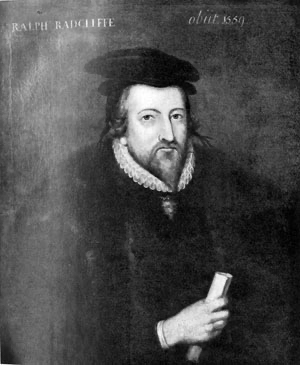 Ralph Radcliffe was the first of the Radcliffe dynasty to live in Hitchin. A noted schoolmaster and playwright, he
was the younger son of Thomas Radcliffe of Lancashire and a cousin of the Earl of Sussex. He was educated at
Oxford University and was one of the earliest undergraduates of the newly founded Brasenose College. He also
attended Cambridge University where he graduated with a B.A. in 1536–7 and then an M.A. in 1539.
Ralph Radcliffe was the first of the Radcliffe dynasty to live in Hitchin. A noted schoolmaster and playwright, he
was the younger son of Thomas Radcliffe of Lancashire and a cousin of the Earl of Sussex. He was educated at
Oxford University and was one of the earliest undergraduates of the newly founded Brasenose College. He also
attended Cambridge University where he graduated with a B.A. in 1536–7 and then an M.A. in 1539.
Ralph married Elizabeth Marshall of Mitcham and they had four children: Ralph, a bencher of the Inner Temple; Jeremie; Edward (who became physician to James I and was knighted by him), and a daughter Elizabeth.
Ralph Radcliffe made his will, very much in the Catholic tradition, in 1558 a year before his death and during the last year of the reign of Queen Mary Tudor. The Hertfordshire Archives includes a 17th century copy of the will which had originally been proved in the Prerogative Court of Canterbury. This was an indication of Ralph’s standing as only the wealthier families with property in more than one diocese took their wills to be proved there.
Ralph died in 1559, aged 40, and was buried in Hitchin church where there is a monumental inscription to him. Ralph bequeathed his estates to his oldest son, also named Ralph Radcliffe (1543 – 1621) who, upon his own death, bequeathed them to his nephew Sir Edward Radcliffe (1590 – 1660). During Sir Edward’s tenure, it appears that the Radcliffe family fortunes declined as a result of the Civil War (1642–1651). An inventory attached to Sir Edward’s will was very brief with no full descriptions. Upon Sir Edward’s death, his nephew Ralph inherited the estates.
Sir Ralph Radcliffe (1633 - 1720)
Ralph, who was knighted on the 18th of February 1668, inherited the Priory from his uncle Sir Edward in 1660. Despite being married three times he only had one child – Edward – by his first wife Anne. Ralph created the Radcliffe family business in the Levant trade in luxury goods (silk, carpets and mohair wool) with areas which include the modern countries of Israel, Jordan, Lebanon, Palestine and Syria. Through this the family made a second significant fortune. The family had a London house in Devonshire Square from where the business was managed. In the 17th century Ralph was granted Court Leet by the crown as Lord of Hitchin and Lord of Charlton. When Ralph died in 1720, £100 was set aside in his will for a monument to be erected. This dominates the East end of Hitchin church. His son Edward inherited Hitchin Priory.Edward Radcliffe (1658 - 1727)
Sir Ralph’s son Edward inherited Hitchin Priory late in his life along with substantial sums in South Sea and East India stock, in addition to the stake in the Levant company trade. He was married to Penelope Shirley, and they had 5 sons (Ralph, Edward, George, John and Arthur) and a daughter (Sarah). All of Edward’s sons worked in the family business created by Edward’s father which revived the family fortunes significantly. His son Ralph inherited the Priory on Edward’s death in 1727.Ralph Radcliffe (1683 - 1739)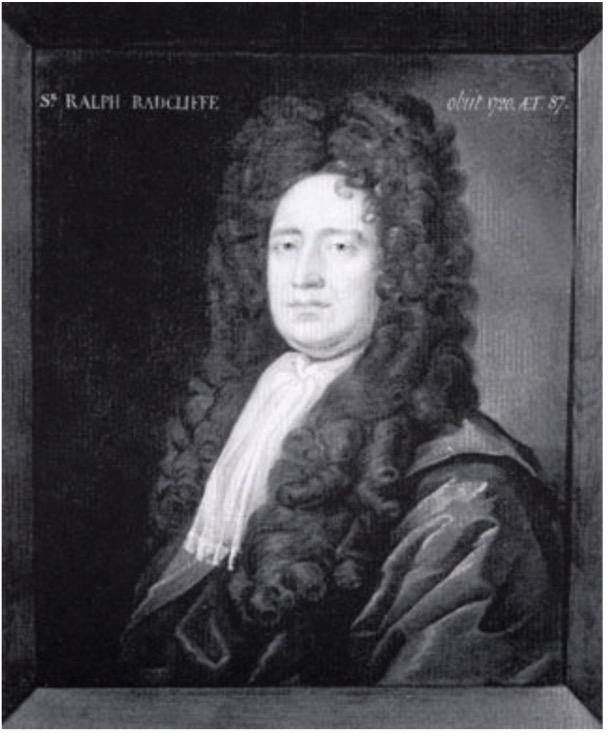
Ralph Radcliffe proceeded to use the profits from the Levant business to enhance the Hitchin Priory estate. On
his death in 1739 the estates were bequeathed to Ralph’s brother Edward Radcliffe (1687 – 1764) and on Edward’s death
to Edward’s brother Arthur Radcliffe (1695 – 1767) who only held Hitchin Priory for three years before he died and
passed the estate to his nephew John.
John Radcliffe (1738 - 1783)
John was a British politician who sat in the House of Commons from 1768 to 1783 and was educated at Eton College from 1754 to 1755. He was put forward at the 1768 general election for St Albans by Lord Grimston who on 21 September 1767 asked the Duke of Newcastle to endorse him. As a result, John was returned as Member of Parliament unopposed. His elections in 1774 and 1780 were also uncontested. He successfully held the seat as MP for St Albans from 1768 until his death.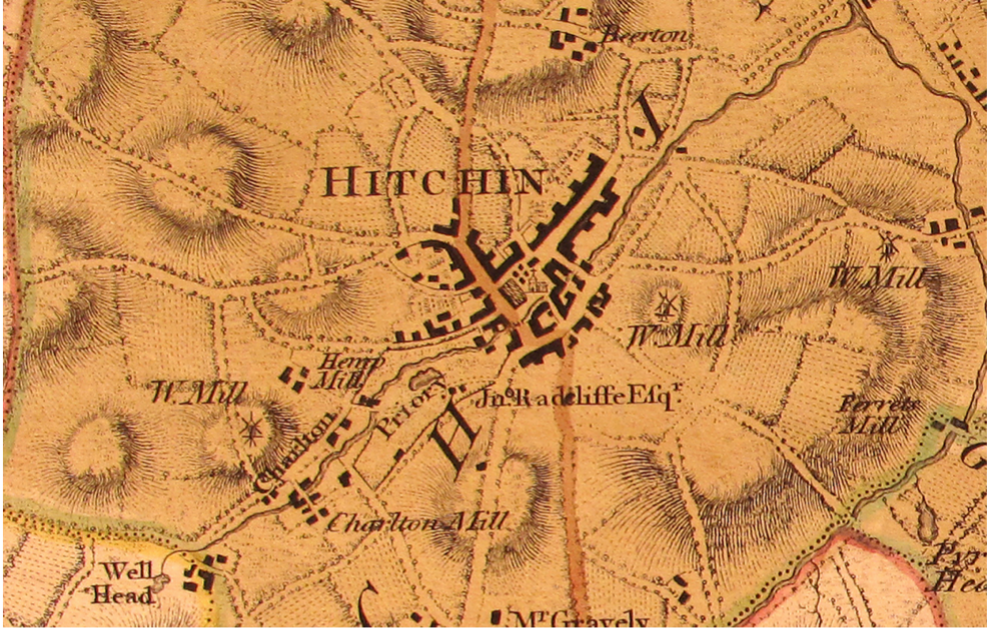 John married Lady Frances Howard, daughter of Henry Howard, 4th Earl of Carlisle on 14 April 1768 and was the man
who developed the gardens at Hitchin Priory. In 1760, John substantially rebuilt Hitchin Priory with the aid of the
Adam brothers with part an elaborate Palladian design. The Dury and Andrews map from 1766 shows Hitchin Priory and
Charlton and shows land owned by John Radcliffe south west of Hitchin. John had no male heirs which meant that the family estates were inherited by his sister Penelope Farnaby (c1740 - 1802)
formerly Penelope Charlton nee Radcliffe. She was the widow of Richard Charlton, and subsequently married
Sir Charles Farnaby (c1740–1798), 3rd Baronet on 12th August 1762 - a British politician who sat in the House of
Commons representing East Grinstead in Kent for 33 years. As a result, Sir Charles took the surname of Radcliffe
and became Sir Charles Farnaby-Radcliffe. When Penelope died Hitchin Priory and Charlton Manor were inherited by
Penelope’s niece Anne Delmé.
John married Lady Frances Howard, daughter of Henry Howard, 4th Earl of Carlisle on 14 April 1768 and was the man
who developed the gardens at Hitchin Priory. In 1760, John substantially rebuilt Hitchin Priory with the aid of the
Adam brothers with part an elaborate Palladian design. The Dury and Andrews map from 1766 shows Hitchin Priory and
Charlton and shows land owned by John Radcliffe south west of Hitchin. John had no male heirs which meant that the family estates were inherited by his sister Penelope Farnaby (c1740 - 1802)
formerly Penelope Charlton nee Radcliffe. She was the widow of Richard Charlton, and subsequently married
Sir Charles Farnaby (c1740–1798), 3rd Baronet on 12th August 1762 - a British politician who sat in the House of
Commons representing East Grinstead in Kent for 33 years. As a result, Sir Charles took the surname of Radcliffe
and became Sir Charles Farnaby-Radcliffe. When Penelope died Hitchin Priory and Charlton Manor were inherited by
Penelope’s niece Anne Delmé.
Anne Melicent, wife of Emilius Delmé (1768 - 1808)
Emilius Delmé (1774 - 1832) husband
The lack of a male heir again saw Hitchin Priory and estates and the Manor of Charlton being passed on to a
woman. Penelope's niece Anne Delmé, the wife of Emilius Henry Delmé, inherited. They added Radcliffe to their
surname to become Delmé-Radcliffe so beginning the association of the Delmé-Radcliffe family with Hitchin, Hitchin
Priory and the Manor of Charlton. Emilius and Anne’s son Frederick inherited the estates.
Frederick Peter Delmé-Radcliffe (1804 - 1875)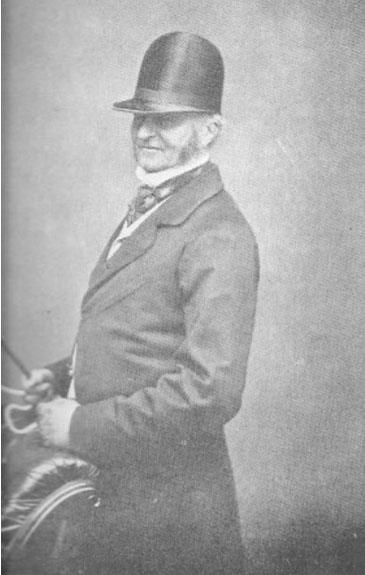
Frederick was a former Captain in the Grenadier Guards. He was Master of the Hertfordshire Hounds and wrote a
well-known book about fox hunting published in 1839 titled “The Noble Science: A Few General ideas on Fox Hunting”.
Several of Frederick's sons pursued a career in the army or navy, the two eldest of whom were both killed in action,
Frederick Peter in the Crimea in 1854 and Seymour Walter in India in 1860. The 1851 census recorded Frederick
Delmé Radcliffe, aged 46, as a Landed Proprietor and Head of the household. The family comprised his wife, Emma,
four daughters and two sons. On Frederick’s death in 1875 his son Hubert Delmé-Radcliffe (1839 – 1878) inherited
and after Hubert’s death the estates passed to his brother Francis.
Francis Augustus Delmé-Radcliffe JP (1845 - 1916)
Francis was the son of Frederick and Emma, and one of nine siblings, inheriting Hitchin Priory and the Lordship of the Manor of Charlton on his brother Hubert’s death. By the time of the 1891 census Francis was recorded as Head of the Household. He was noted as a Commander (or Commodore) Royal Navy Retired and aged 45. He was married to Mary who was born in 1840. Francis Delmé-Radcliffe was still the head of household in the 1911 census when the family comprised his wife and nephew. On his death in 1916 Hitchin Priory and the Lordship of the Manor of Charlton passed to his nephew Ralph.Sir Ralph Hubert John Delmé-Radcliffe JP (1877 - 1963)
Ralph was the son of Reverend Arthur Henry Delmé-Radcliffe and his wife Beatrice Ryder daughter of Hon. F. Dudley Ryder and granddaughter of Rt. Hon. Dudley, 1st Earl of Harrowby, and to him fell the task of modernising and restoring Hitchin Priory. Ralph was educated at Eton and was married twice - firstly in 1912 in London to Countess Niva Sonia Wanda Onroussoff, daughter of Prince Sedwick Onroussoff, and secondly in Westminster in 1938, to Elisabeth Fennell, only daughter of Sir Hugh Gwynne Levick. Sir Ralph was a clerk in the House of Commons and was a Captain in the 12th Battery of the London Regiment. The County Record Office holds very few items dating from this period with a notable exception being a set of plans of the Priory dated 1923 created to aid the restoration work. Sir Ralph was recorded as the Lord of Manor in the Manorial Documents Register in 1925. On Sir Ralph’s death in 1963 Hitchin Priory, Charlton Manor and the Lordship of Charlton Manor passed to his daughter Anne.Anne Melicent Delmé-Radcliffe (1941 - ...)
After Sir Ralph’s death, his only child Anne inherited both Hitchin Priory and the Lordship of the Manor of Charlton. She, like her father, was also married twice, firstly in 1961 to Sir John Bruce Woollacott Ropner, 2nd Baronet, (died 2016) who became High Sheriff of North Yorkshire in 1991, was Master of the Bedale Hunt and whom she divorced in 1970, and secondly to Richard Ernest de Courcy Beamish who was educated at Winchester College and lived in County Cork, Ireland and subsequently with Anne in Cadiz, Spain. Anne sold the Hitchin Priory to Hertfordshire County Council in 1964 thus ending her family's association which had continued for more than 400 years. Anne held the Lordship of the Manor of Charlton which was not passed to the new owners of Hitchin Priory.Hitchin Priory - The Post-Radcliffe Years
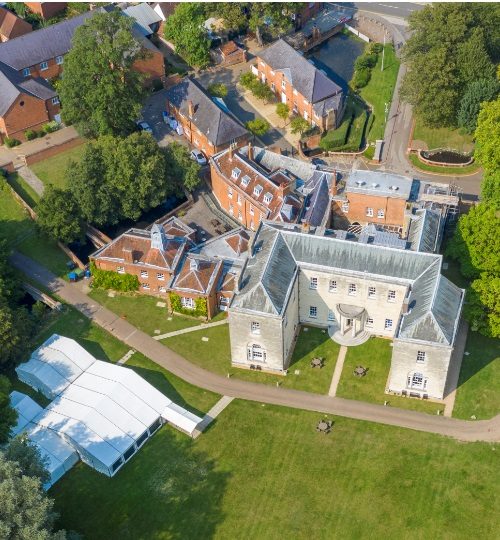 After being sold by Anne Delmé-Radcliffe, the Priory was used by the Hertfordshire County Education Department as
a centre for residential courses. In 1984 the building was taken over by an insurance company and converted into
offices. Hitchin Priory is now a 52-bedroom hotel in 19 acres of parkland with an indoor swimming pool and
a golf course. The hotel underwent a programme of complete refurbishment in 2009 although parts of the original
priory are incorporated in the current building, which has been a Grade I listed building (a building of exceptional
interest) on the Register of Historic England since 1951. It is currently owned by Chartridge Venues
along with several other events-related properties.
After being sold by Anne Delmé-Radcliffe, the Priory was used by the Hertfordshire County Education Department as
a centre for residential courses. In 1984 the building was taken over by an insurance company and converted into
offices. Hitchin Priory is now a 52-bedroom hotel in 19 acres of parkland with an indoor swimming pool and
a golf course. The hotel underwent a programme of complete refurbishment in 2009 although parts of the original
priory are incorporated in the current building, which has been a Grade I listed building (a building of exceptional
interest) on the Register of Historic England since 1951. It is currently owned by Chartridge Venues
along with several other events-related properties.
Peter Havart-Simkin - The Present Day Lord of Charlton
Anne Delmé-Radcliffe passed the Lordship of the Manor of Charlton to the current holder of the title Peter
Havart-Simkin (b. 1952), a British Citizen currently residing in California in the USA with his
wife Lady Lucinda. Both also enjoy spending time on the private island of Mustique in St. Vincent and the Grenadines.
Peter Havart-Simkin is a serial entrepreneur having worked in the IT industry for more than 40 years and founded several companies including Firefox Communications which went from his dining room table in England to a public market listing trading on NASDAQ in the USA. As a former CTO, CMO and CEO, Havart-Simkin currently provides advice and guidance and business-related research to technology company CEOs and startup technology CEOs and senior management globally.
Charlton Stories - Sir Henry Bessemer – Born in Charlton House
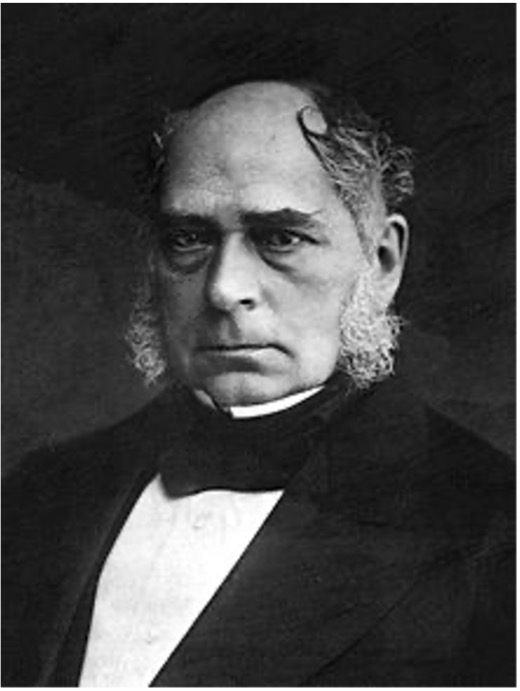 Sir Henry Bessemer FRS (19 January 1813 – 15 March 1898) born in Charlton House in Charlton, was an English
inventor, whose steel-making process would become the most important technique for making steel in the
nineteenth century for almost one hundred years from 1856 to 1950. He also played a significant role
in establishing the town of Sheffield as a major industrial centre. Bessemer's father, Anthony, was born
in London into a Huguenot family, but moved to Paris when he was about 21 years old. He became a member of
the French Academy of Science when he was 26. He was forced to leave Paris by the French Revolution
and returned to Britain.
Sir Henry Bessemer FRS (19 January 1813 – 15 March 1898) born in Charlton House in Charlton, was an English
inventor, whose steel-making process would become the most important technique for making steel in the
nineteenth century for almost one hundred years from 1856 to 1950. He also played a significant role
in establishing the town of Sheffield as a major industrial centre. Bessemer's father, Anthony, was born
in London into a Huguenot family, but moved to Paris when he was about 21 years old. He became a member of
the French Academy of Science when he was 26. He was forced to leave Paris by the French Revolution
and returned to Britain.
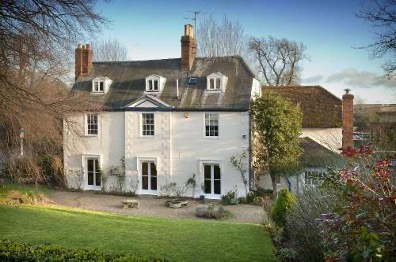 There he invented a process for making gold chains, which was successful, and
enabled him to buy a small estate in Charlton where Henry was born. According to Bessemer he was given his
name by his godfather Henry Caslon, who employed his father as a punchcutter.
There he invented a process for making gold chains, which was successful, and
enabled him to buy a small estate in Charlton where Henry was born. According to Bessemer he was given his
name by his godfather Henry Caslon, who employed his father as a punchcutter.
Charlton House in Charlton, where Henry was born, has a traditional Blue Plaque celebrating Sir Henry Bessemer. Bessemer patented a method for making a continuous ribbon of plate glass in 1848, but it was not commercially successful. He gained experience in designing furnaces, which was to be of great use for his new steel-making process.
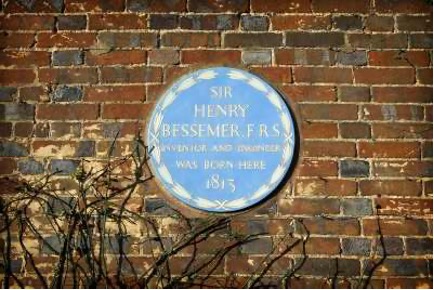
Henry worked on the problem of manufacturing cheap steel for ordnance production from 1850 to 1855 when he patented his method. Though this process is no longer commercially used, at the time of its invention it was of enormous industrial importance because it lowered the cost of production steel, leading to steel being widely substituted for cast iron and wrought iron. Bessemer's attention was drawn to the problem of steel manufacture during an attempt to improve the construction of guns. Bessemer was a prolific inventor and held at least 129 patents, spanning from 1838 to 1883. These included military ordnance, movable dies for embossed postage stamps, a screw extruder to extract sugar from sugar cane, and others in the fields of iron, steel and glass. Bessemer also obtained a patent in 1857 for the casting of metal between contrarotating rollers still used today. Bessemer was knighted by Queen Victoria for his contribution to science on 26 June 1879, and in the same year was made a fellow of the Royal Society. In 2003 Bessemer was named among the top 10 technological innovators in Human Accomplishment: The Pursuit of Excellence in the Arts and Sciences, 800 B.C. to 1950.
* The Coat of Arms (Armorial Bearings) of Peter Havart-Simkin as the Lord of Charlton have been deposited
with the British Library under the provisions of Section 15 of the Copyright Act, 1911. It has also
been deposited and acknowledged of behalf of the Libraries of the Universities of Oxford and Cambridge,
the National Library of Scotland, the Library of Trinity College Dublin, and the National Library of Wales.
Coat of Arms can also be found here: https://books.google.com/books?id=itG9PQAACAAJ
** All images on this page are copyright their respective owners.
